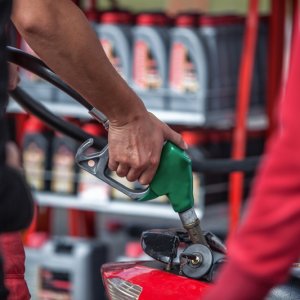
Subsidies on Gasoline Continue to Decrease
 By Perla Velasco | Journalist & Industry Analyst -
Mon, 12/19/2022 - 10:42
By Perla Velasco | Journalist & Industry Analyst -
Mon, 12/19/2022 - 10:42
Pressured by high oil prices, the government has relied on tax subsidies to hold back inflation. Despite expert advice on the inefficiency of this measure, Mexico’s IEPS tax collection has amounted to a loss of MX$88.59 billion (US$4.51 billion) in 2022. Although the market remains volatile, toward the end of the year oil prices have gradually decreased and subsidies have been cut correspondingly.
The Ministry of Finance published the tax subsidies on fuels for the week from December 17 to December 23, 2022. The subsidies for Magna and Premium gasoline and Diesel decreased once again.
The amount of tax stimuli decreased to 24.49 percent, reaching MX$1.35/l (US$0.07/l) for gasoline with a level below 91 octane. Benefits stay at 0 percent for gasoline with a level equal to or above 91 octane and to 66.93 percent, reaching MX$4.04/l (US$0.20/l), for diesel. Fuel station customers will be exempted from paying the Special Tax on Production and Services (IEPS) up to these amounts. Globally, fuel prices have started to gradually decrease to levels before the war in Ukraine. Therefore, Mexico’s government has gradually decreased its subsidies, as fuel prices now place a lower strain on the population. The finance ministry increased the amount paid for IEPS in October, however, considering the rising inflation.
Premium has reached three consecutive weeks without the stimuli, as customers have to pay the total MX$4.64/l (US$0.23).
Despite Mexico’s growing energy sovereignty, an important part of which focuses on fuels like diesel and gasoline, PEMEX’s plans to achieve self-sufficiency seem to be no longer in reach for 2023. While Dos Bocas’ initial cost has doubled, it has no set date to start operations. Fuel produced there may reduce the country’s reliance on imports and thereby decrease costs. According to Rocío Nahle, Mexico’s Minister of Energy, some security processes are being carried out at the Olmeca refinery before it can come online. The refinery is expected to start commercial operations at 50 percent capacity by 3Q23.
PEMEX also announced that it expects to be able to send 100 percent of Deer Park’s production to Mexico by 1H24. The NOC currently sends 25 percent of the Deer Park refinery’s products to Mexico. However, PEMEX’s refinery business appears to be struggling: The company’s refining subsidiary lost US$7.37/b during 3Q22.
Furthermore, the current administration stands firm on its refining-oriented energy strategy and keeps pushing to regain control of the market. While the company lost control over supply in most of the service stations in the country after the 2013 energy reform, it has deployed various actions toward recovering the market. In 2021 PEMEX had control of 73 percent of the fuel supply market but by 2022 it has control of 85 percent.
















